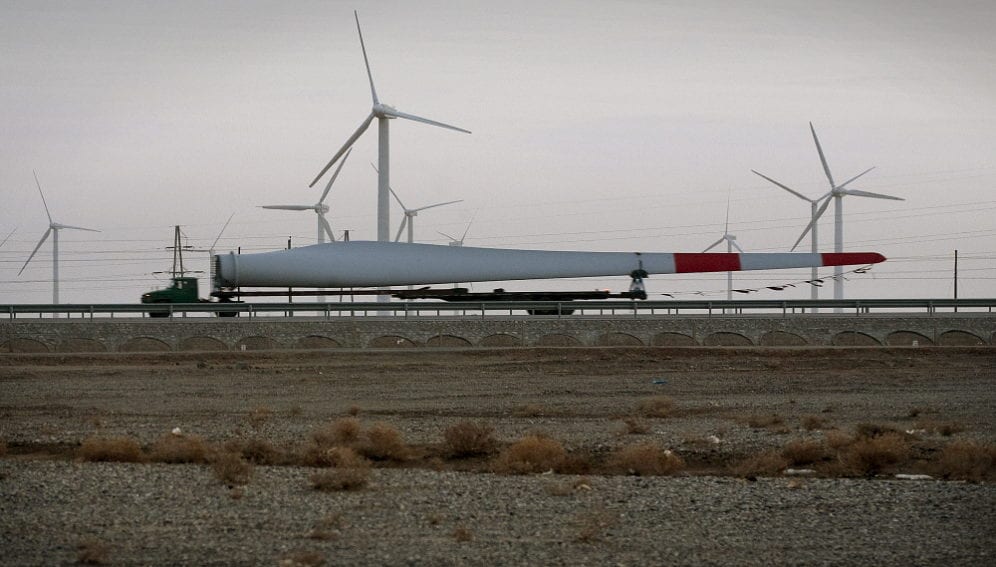By: Katia Moskvitch
Send to a friend
The details you provide on this page will not be used to send unsolicited email, and will not be sold to a 3rd party. See privacy policy.
As Japan pledges up to US$1.5 billion and the United States up to US$3 billion to the UN Green Climate Fund, a study recommends ways that China can reconcile economic growth and emissions targets.
The fund was set up in 2013 to help the world’s poorest nations invest in clean energy and move away from fossil fuels. But there are disputes regarding whether and how much industrialised countries should contribute to the fund.
The separate funding announcements by Japan and US President Barack Obama at the G20 (Group of Twenty) summit of world leaders in Brisbane, Australia, on 15 and 16 November send strong political signals and come just days after a landmark deal by the US and China to reduce their greenhouse gas emissions over the next ten to 15 years.
“President Obama’s pledge of US$3 billion is very significant not only because it demonstrates his personal commitment in supporting developing countries to tackle climate change, but also because it will also generate momentum for other developed as well as developing countries to provide funding as well,” says Saleemul Huq, director of research body the International Centre for Climate Change and Development in Dhaka, Bangladesh.
“China has the opportunity to prove to the world that it is possible to achieve the goals of increasing people’s standard of living, while reducing the risk of climate change at the same time.”
Teng Fei, Tsinghua University
The Japanese and US promises come ahead of a Green Climate Fund meeting in Berlin, Germany, on 20 November, where nations can pledge funding support.
This will be followed by the next UN climate summit (COP 20) in Lima, Peru, which will gather climate negotiators from across the world. They will start drafting the 2015 international climate change accord that is due to be finalised and signed in Paris, France, next year.
‘Chinese dream’?
Meanwhile, a study released in Beijing, China, last week (14 November) on the heels of the US-China deal outlines recommendations for the world’s biggest producer of greenhouse gases to achieve its emissions target while maintaining economic growth and energy security.
The report, written by researchers at Tsinghua University in Beijing, is one of a series of country studies linked to the work of the Global Commission on the Economy and Climate, an independent, international initiative to examine the economic costs and benefits of acting on climate change.
The key to success will be the right set of government policies, say the researchers, who recommend collaborative governance on specific economic, energy and environmental targets.
“China has the opportunity to prove to the world that it is possible to achieve the goals of increasing people’s standard of living, while reducing the risk of climate change at the same time,” said Teng Fei, an environmental economist and an author of the report.
“We can expect better access to education in cities, more employment opportunities, as well as better air quality and health. This is not only the ‘Chinese dream’, but also the world’s dream. China will lead the world by providing a blueprint for a new climate economy.”
Following 30 years of rapid economic expansion, says the report, the growth rate of China’s GDP (gross domestic product) fell to around 7.7 per cent in 2013, the lowest since the 1997 Asian financial crisis.
One report recommendation is to set a limit on total coal consumption, stabilising it around 2020 and then rapidly decreasing it.
This goal could be used as “a guide and forcing mechanism to promote the transformation of economic and social development and to accelerate energy conservation and carbon reduction”, argues the study.
Specific targets for reducing coal consumption can also help to promote technological innovations and improve resource productivity, say the researchers. Such improvements would be important for China, as investment-driven growth declines and the country faces increasing resource constraints.
If such measures are not in place, the country is expected to depend on foreign supplies for 75 per cent of its oil and more than 40 per cent of its natural gas by 2030, write the researchers.
“This important study highlights the significant opportunities for China to continue to develop while reducing air pollution and the risk of dangerous climate change,” said former Mexican President Felipe Calderón, who chairs the Global Commission on the Economy and Climate, at the report’s launch.














